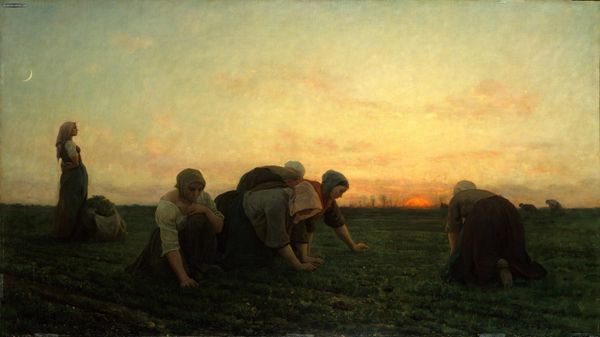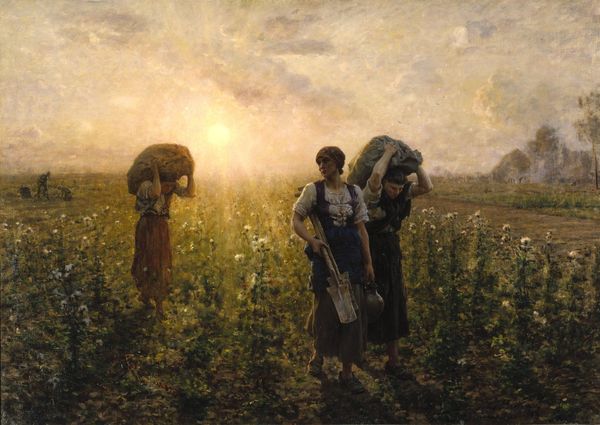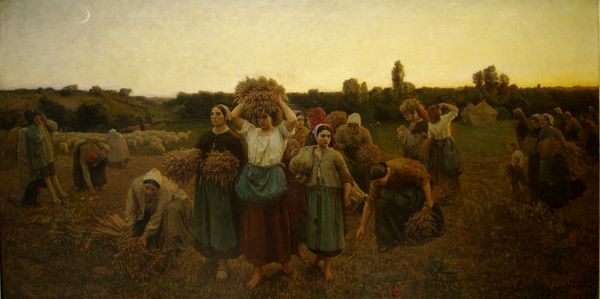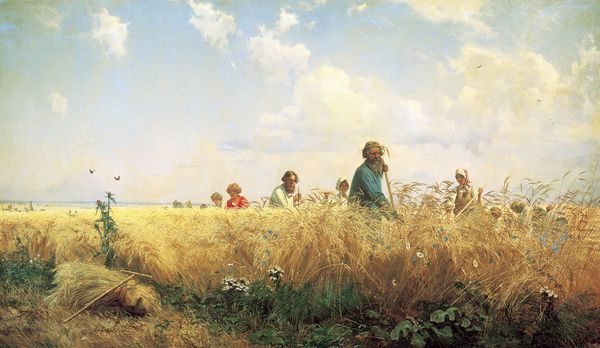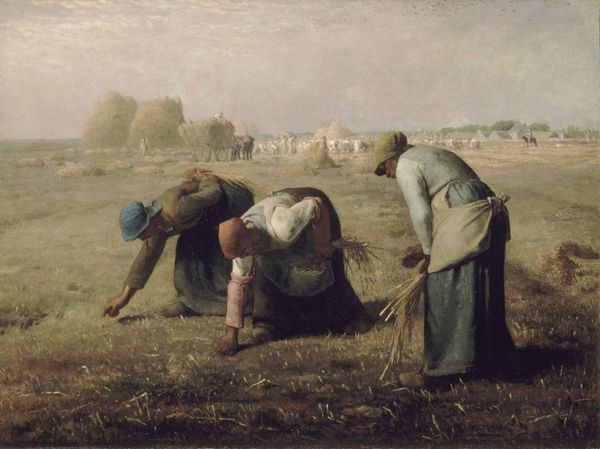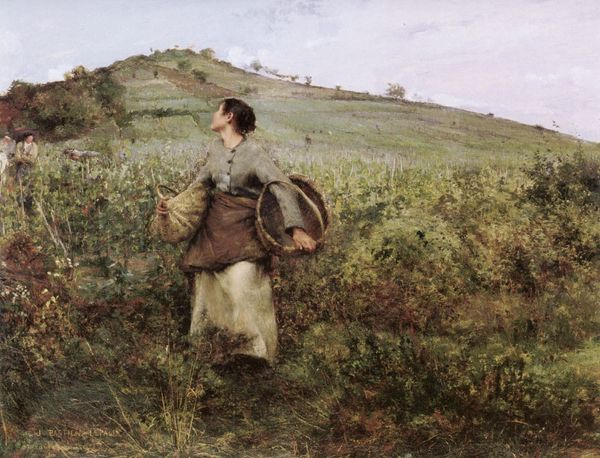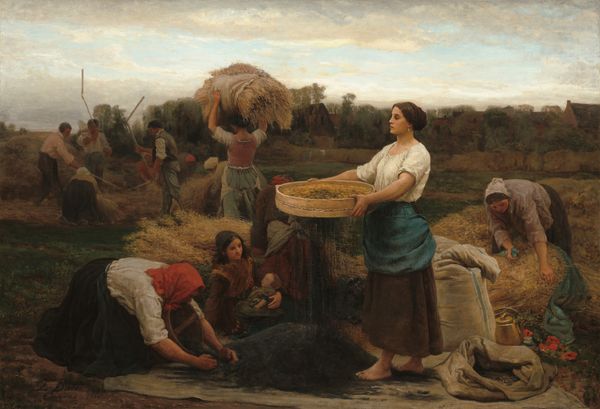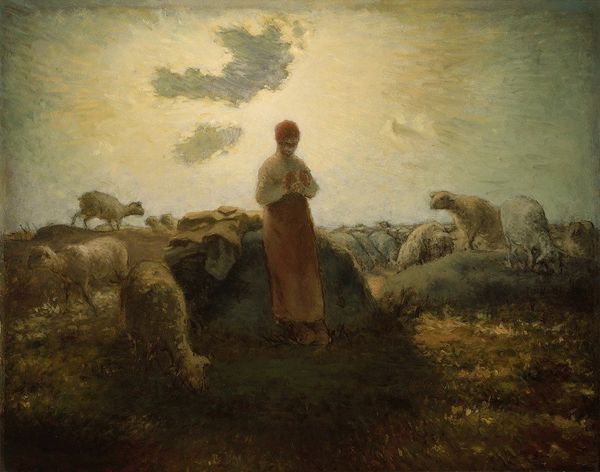
painting, plein-air, oil-paint
#
painting
#
impressionism
#
plein-air
#
oil-paint
#
landscape
#
genre-painting
#
academic-art
#
realism
Copyright: Public domain
Curator: Looking at this canvas, I immediately feel the weight of the day, the slow fatigue of the body. Editor: This is "Gleaners at Sunset" by Jules Breton, a work dating from 1863. Note how Breton structures the painting, using a horizontal format which seems to expand the agricultural fields under a wide sunset sky. Curator: Yes, the horizontality emphasizes the never-ending work of the figures, hunched and anonymous against the vast land. How different it is to look at the earth versus claiming land as your property. What are they collecting from the field? Editor: They glean – gather leftover crops after the harvest. Examine Breton's attention to detail. He doesn't shy away from showing the rough texture of the wheat, the plain clothes of the gleaners, the heavy labor involved. The materiality of their existence. Curator: And the light! Note how the colors melt with an incredible aerial perspective. Breton uses color to suggest volume. Also note how the composition creates this continuous cycle where some rise while other kneel as the horizon recedes into an infinity that consumes and regurgitates life. Editor: Right, consider the artistic conventions he upholds too. Despite the gritty subject matter, Breton maintains a level of refinement in his oil painting, which suggests the labor, materials, and its social standing in relation to “high” art of the period. Curator: Although, let us also consider the painting's surface, there is such grace in the movement captured through the strokes which brings us back to the cycle. I think that’s Breton's aim here, not only to capture a landscape but eternal motion. Editor: Indeed, by contrasting Breton’s method, material, and intention, this artwork asks about how a tradition can either solidify or soften, depending on how artists recontextualize production itself. Curator: Seeing it this way I think this has more impact to the observer. Editor: Yes.
Comments
No comments
Be the first to comment and join the conversation on the ultimate creative platform.

